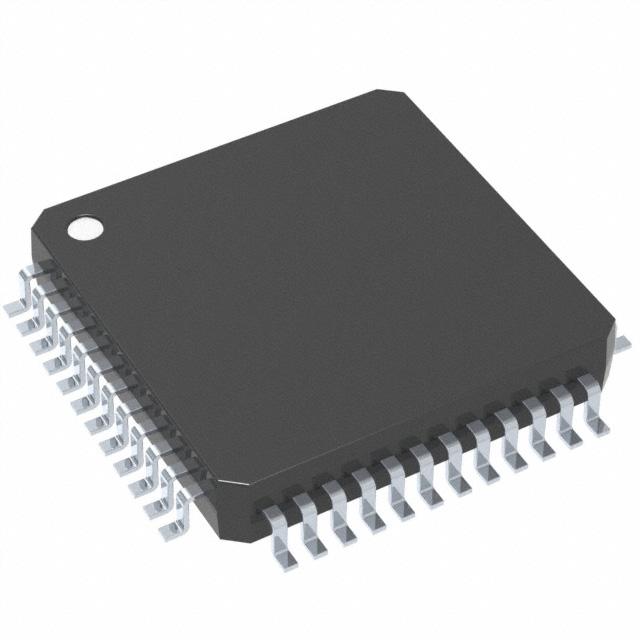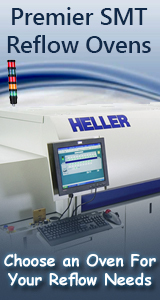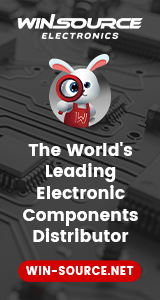Electronic components are electronic components and small components of machines and instruments, which themselves often consist of a number of parts that can be used in the same kind of products; often refers to certain parts of the electrical, radio, instrumentation and other industries, and is a general term for electronic devices such as capacitors, transistors, swim wires, clockwork, etc. Commonly, there are diodes and so on. The history of the development of electronic components is actually a condensed history of electronic development. Electronic technology is the late nineteenth century, the early twentieth century began to develop the emerging technology, the twentieth century the most rapid development, the most widely used, become an important symbol of the development of modern science and technology.
Electronic components include: resistors, capacitors, inductors, potentiometers, electronic tubes, heat sinks, electromechanical components, connectors, semiconductor discrete devices, electro-acoustic devices, laser devices, electronic display devices, optoelectronic devices, sensors, power supplies, switches, micro motors, electronic transformers, relays, printed circuit boards, integrated circuits, all kinds of circuits, piezoelectric, crystal, quartz, ceramic magnetic materials, printed circuits with Substrate substrates, electronic functional process special materials, electronic adhesive (tape) products, electronic chemical materials and parts, etc. In terms of quality, electronic components are certified by CE of EU, UL of USA, VDE and TUV of Germany and CQC of China to ensure the qualification of components.
Semiconductor
Semiconductor specifically refers to the conductive properties at room temperature between the conductor and insulator materials, semiconductors in integrated circuits, consumer electronics, communication systems, photovoltaic power generation, lighting, high-power power conversion and other fields have applications, such as diodes is the use of semiconductor devices.
1. Physical definition of semiconductor
Matter exists in a variety of forms, solid, liquid, gas, plasma, etc.. We usually call materials with poor electrical conductivity, such as coal, artificial crystals, amber, ceramics, etc., insulators. And the metals with better conductivity such as gold, silver, copper, iron, tin, aluminum, etc. are called conductors. The material between conductor and insulator can be simply called semiconductor. Compared with conductors and insulators, the discovery of semiconductor materials is the most recent, until the 1930s, when the material purification technology improved, the existence of semiconductors is really recognized by the academic community. A semiconductor is a material whose electrical conductivity is between that of a conductor and an insulator at room temperature. A semiconductor is a material with controlled electrical conductivity ranging from insulator to conductor. From the point of view of science and technology and economic development, semiconductors affect people's daily work life, until the 1930s this material is recognized by the academic community.
2. Classification and properties of semiconductors
①. Elemental semiconductors. Elemental semiconductors are semiconductors composed of a single element, of which silicon and selenium were studied earlier. It is composed of the same elements with semiconductor properties of solid materials, vulnerable to trace impurities and external conditions and changes. At present, only silicon and germanium have good performance and are widely used, and selenium is used in the field of electronic lighting and optoelectronics. Silicon is used more in the semiconductor industry, which is mainly influenced by silicon dioxide, which can form a mask on the device production and can improve the stability of semiconductor devices and facilitate automated industrial production.
②. Inorganic synthetics semiconductors. Inorganic synthetics are mainly through a single element to form semiconductor materials, of course, there are a variety of elements to form semiconductor materials, the main semiconductor properties are group I and V, VI, VII; group II and IV, V, VI, VII; group III and V, VI; group IV and IV, VI; V and VI; VI and VI combined compounds, but by the characteristics of the elements and However, not all compounds can meet the requirements of semiconductor materials due to the characteristics of the elements and the way they are made. This semiconductor is mainly used in high-speed devices, and transistors made of InP have higher speed than any other materials, and are mainly used in optoelectronic integrated circuits and nuclear radiation resistant devices. For materials with high conductivity, they are mainly used in LEDs and other applications.
③. Organic compound semiconductor. Organic compounds are compounds containing molecules containing carbon bonds, and organic compounds and carbon bonds perpendicular to each other, superimposed in a way that can form a conduction band, and through the chemical addition, can make it into the energy band, so that conductivity can occur, thus forming an organic compound semiconductor. This semiconductor is characterized by low cost, good solubility, and easy processing of light materials compared to previous semiconductors. The conductivity can be controlled by controlling the molecules, and the applications are relatively wide, mainly for organic thin films and organic lighting.
④. Amorphous semiconductor. It is also called amorphous semiconductor or glass semiconductor, belongs to a class of semi-conducting materials. Amorphous semiconductors, like other amorphous materials, are short-range ordered and long-range disordered structures. It is formed mainly by changing the relative positions of the atoms and changing the original periodic arrangement to form amorphous silicon. The main difference between crystalline and amorphous states is whether the atoms are arranged with a long program or not. It is difficult to control the properties of amorphous semiconductors, and with the invention of technology, amorphous semiconductors came into use. This fabrication process is simple and is mainly used in engineering class, which has good effect in light absorption and is mainly used in solar cells and liquid crystal displays.
⑤. Intrinsic semiconductor: The semiconductor that contains no impurities and has no lattice defects is called an intrinsic semiconductor. At very low temperatures, the valence band of the semiconductor is full band, subject to thermal excitation, some of the electrons in the valence band will cross the forbidden band into the higher energy empty band, the existence of electrons in the empty band becomes the conduction band, the valence band is missing an electron after the formation of a positively charged vacancy, called the hole. The hole conducting is not the actual movement, but an equivalent. The electrons conduct electricity when the holes of equal charge move in their opposite direction.
They produce directional motion under the action of an external electric field to form macroscopic currents, called electron conductivity and hole conductivity, respectively. This mixed type of conductivity due to the generation of electron-hole pairs is called intrinsic conductivity. The electrons in the conduction band fall into the holes and the electron-hole pairs disappear, which is called compounding. The energy released during compounding becomes electromagnetic radiation (luminescence) or thermal vibrational energy of the lattice (heat generation). At a certain temperature, electron-hole pair generation and compounding exist simultaneously and reach a dynamic equilibrium, when the semiconductor has a certain carrier density, and thus has a certain resistivity. When the temperature increases, more electron-hole pairs are generated, the carrier density increases, and the resistivity decreases. Pure semiconductors without lattice defects have a higher resistivity and are not much used in practice.
3. Specific values of semiconductors
The widely used semiconductor materials are germanium, silicon, selenium, gallium arsenide, gallium phosphide, indium antimonide, etc.. Among them, the production technology of germanium and silicon materials is more mature, and more are used. Components made of semiconductor materials, integrated circuits, etc. are important basic products of the electronics industry and have been used in a large number of aspects of electronic technology. Semiconductor materials, devices, integrated circuit production and research has become an important part of the electronics industry.
In addition, whether from the point of view of science and technology or economic development, the importance of semiconductors are very huge. Most of the electronic products, such as computers, cell phones or digital recorders in the core unit have a very close relationship with the semiconductor. Common semiconductor materials include silicon, germanium, gallium arsenide, etc. Silicon is the most influential one in various semiconductor material applications.
4. Application areas of semiconductors
①. Photovoltaic applications
Semiconductor materials photovoltaic effect is the basic principle of solar cell operation. At this stage, the photovoltaic application of semiconductor materials has become a major hit, is currently the world's fastest growing and best developed clean energy market. Solar cells are mainly made of semiconductor materials, the main criterion for judging the merits of solar cells is the photoelectric conversion rate, the higher the photoelectric conversion rate, the higher the efficiency of solar cells. Depending on the semiconductor material used, solar cells are divided into crystalline silicon solar cells, thin film cells and III-V compound cells.
②. Lighting Applications
LED is a semiconductor light-emitting diode built on a semiconductor transistor, using LED technology semiconductor light source small size, can achieve flat packaging, low heat generation, energy efficient, long product life, fast response time, and green, non-polluting, but also can be developed into a thin and short products, once introduced, it has quickly become popular, a new generation of high-quality lighting source, has been widely used In our life. Such as traffic lights, backlighting of electronic products, city night landscape beautification light source, indoor lighting and other fields, have applications.
③. High-power power conversion
The mutual conversion of AC and DC power is very important for the use of electrical appliances, is the necessary protection of electrical appliances. This requires the use of such power conversion devices. Silicon carbide breakdown voltage strength, wide band width, high thermal conductivity, so SiC semiconductor devices are very suitable for applications with high power density and switching frequency, power conversion devices is one of them. The high temperature, high voltage, and high frequency performance of SiC components has led to a wide range of applications such as deep well drilling, inverters in power generation, energy converters in electric hybrid vehicles, and traction power conversion in light rail trains. Due to the advantages of SiC itself and the industry's need for lightweight, high conversion efficiency semiconductor materials at this stage, SiC will replace Si as the most widely used semiconductor material.
5. Characteristics of semiconductor
①. Thermal properties
The resistivity of semiconductors changes significantly with temperature changes. For example, for pure germanium, its resistivity decreases to 1/2 of its original value for every 10 degrees increase in humidity. Using the thermal properties of semiconductors, it is possible to make temperature-sensitive elements - thermistors, which are used in temperature measurement and control systems. It is worth noting that various semiconductor devices have thermal characteristics that affect the stability of their operation when the ambient temperature changes.
②. Photosensitive characteristics
The resistivity of semiconductors is very sensitive to changes in light. When there is light, the resistivity is very small; no light, the resistivity is very large. For example, the commonly used cadmium sulfide photoresistor, in the absence of light, the resistance is up to tens of megohms, when illuminated. The resistance drops to several tens of kilohms at once, and the resistance value changes by thousands of times. Using the photosensitive properties of semiconductors, many types of optoelectronic devices are produced, such as photodiodes, phototransistors and silicon photocells. They are widely used in automatic control and radio technology.
③. Doping properties
In a pure semiconductor, the doping of a very small amount of impurity elements will cause a great change in its resistivity. Example. Doping in pure silicon. Parts per million - of the element boron, its resistivity will be reduced from 214,000Ω-cm to 0.4Ω-cm. That is, the conductivity of silicon increased by more than 500,000 times. It is through the doping of certain specific impurity elements, artificially and precisely control the conductivity of the semiconductor, manufactured into different types of semiconductor devices. It is no exaggeration to say that almost all semiconductor devices are made of semiconductor materials doped with specific impurities.
Integrated Circuits
An integrated circuit, abbreviated as IC, is a circuit with a specific function in which a certain number of common electronic components, such as resistors, capacitors, transistors, etc., and the wires between these components, are integrated together by a semiconductor process.
1.IC specific definition
Integrated circuit (integrated circuit) is a miniature electronic device or component. Using a certain process, the transistors, resistors, capacitors and inductors required in a circuit and wiring interconnected together in a small piece or several small pieces of semiconductor wafers or dielectric substrates, and then packaged in a shell, becoming a micro structure with the required circuit function; where all components in the structure has been composed of a whole, so that electronic components towards miniaturization, low power consumption, intelligence and It is a big step towards miniaturization, low power consumption, intelligence and high reliability. It is represented by the letters "IC" in the circuit. Integrated circuits were invented by Jack Kilby (integrated circuits based on germanium (Ge)) and Robert Noyes (integrated circuits based on silicon (Si)).
Most applications in the semiconductor industry today are silicon based integrated circuits. It is a new type of semiconductor device that was developed in the late 1950s to 1960s. It is a semiconductor manufacturing process such as oxidation, photolithography, diffusion, epitaxy, evaporation of aluminum, etc., the semiconductor, resistance, capacitance and other components required to form a circuit with certain functions and the connecting wires between them are all integrated in a small piece of silicon wafer, and then welded and packaged in a tube housing electronic devices. The package shell has a variety of forms such as round shell, flat or double inline. Integrated circuit technology includes chip manufacturing technology and design technology, mainly in processing equipment, processing technology, packaging and testing, mass production and the ability to design innovation.
2. IC-related classification
①. By functional structure
Integrated circuits, also known as ICs, can be divided into three categories: analog ICs, digital ICs and mixed digital/analog ICs, according to their functions and structures. Analog ICs, also known as linear circuits, are used to generate, amplify and process various analog signals (signals whose amplitude varies with time. For example, the audio signal of semiconductor radio, tape signal of VCR, etc.), the input signal and output signal are proportional to each other. Digital integrated circuits, on the other hand, are used to generate, amplify and process various digital signals (meaning signals that take discrete values in time and amplitude. For example, 5G cell phones, digital cameras, computer CPUs, audio signals and video signals for logic control and playback of digital TVs).
②. By production process
Integrated circuits can be divided into semiconductor integrated circuits and membrane integrated circuits according to the production process. Film integrated circuits are also classified as thick film integrated circuits and thin film integrated circuits.
③. According to the level of integration
ICs can be divided into SSIC small-scale ICs, MSIC medium-scale ICs, LSIC large-scale ICs, VLSIC ultra-large-scale ICs, ULSIC very-large-scale ICs, and GSIC huge-scale ICs, which are also called very-large-scale ICs or ultra-large-scale ICs, according to the level of integration.
④. According to the different conductivity types
ICs can be divided into bipolar ICs and unipolar ICs by conductivity type, and they are both digital ICs. Bipolar integrated circuits have complex production process and higher power consumption, representing integrated circuits such as TTL, ECL, HTL, LST-TL, STTL and other types. Unipolar ICs are simple to produce and consume less power, and are easy to make into large-scale ICs, representing CMOS, NMOS, PMOS and other types of ICs.
⑤. According to the use of points
Integrated circuits can be divided into integrated circuits for television sets, audio integrated circuits, integrated circuits for video players, integrated circuits for video recorders, integrated circuits for computers (microcomputers), integrated circuits for electronic instruments, integrated circuits for communications, integrated circuits for cameras, integrated circuits for remote control, integrated circuits for language, integrated circuits for alarms and a variety of special integrated circuits.
⑥. By application area
ICs can be divided into standard general-purpose ICs and special-purpose ICs according to their application areas.
⑦. According to the shape
ICs can be divided into round (metal case transistor package type, generally suitable for high power), flat (good stability, small size) and double inline type.
3. Integrated circuit development history
The most advanced integrated circuits are the "cores" of microprocessors or multi-core processors, which can control everything from computers to cell phones to digital microwave ovens. Memory and ASICs are examples of other families of integrated circuits that are important to the modern information society. Although the cost of designing and developing a complex integrated circuit is very high, when spread over products that are usually in the millions, the cost per IC is minimized.
Over the years, ICs have continued to evolve to smaller form factors, allowing more circuits to be packaged per chip. This increases the capacity per unit area, which can reduce costs and increase functionality - see Moore's Law, the number of transistors in an integrated circuit, doubling every two years. In short, as form factors shrink, almost all metrics improve-unit cost and switching power consumption fall and speed increases. However, ICs integrating nanoscale devices are not without problems, mainly leakage current (leakage current). As a result, the increase in speed and power consumption for the end user is significant, and manufacturers are faced with the acute challenge of using better geometry. This process and the progress expected in the coming years are well described in the International Technology Roadmap for Semiconductors (ITRS).
More and more circuits are coming to designers in the form of integrated chips, making the development of electronic circuits tend toward miniaturization and high speed. More and more applications have been transformed from complex analog circuits to simple digital logic integrated circuits.
4. The great popularity of integrated circuits
Just half a century after its development, integrated circuits have become ubiquitous, with computers, cell phones and other digital appliances becoming an integral part of the fabric of modern society. This is because modern computing, communication, manufacturing and transportation systems, including the Internet, all depend on the existence of integrated circuits. Many scholars even consider the digital revolution brought about by the integrated circuit to be the most important event in human history.
Learn more:https://www.corechips.net/







